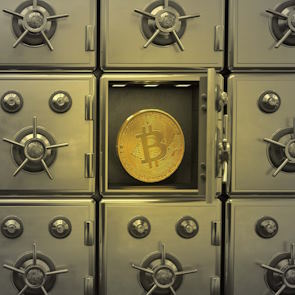At the forefront of revolution are cryptocurrencies—decentralized digital assets that offer unparalleled opportunities for value accumulation and financial sovereignty. However, with these opportunities come risks, particularly in the realm of security. Cryptocurrencies, being digital by nature, are susceptible to hacking, fraud, and other malicious activities that can lead to devastating losses. As stories of exchange breaches and compromised wallets continue to make headlines, the need for airtight security solutions has become increasingly apparent. Cryptocurrency vaults, the digital analog to physical safes, have emerged as a response to this pressing need.
Understanding the Need for Secure Storage
The inherent vulnerabilities of the digital world have made secure storage of cryptocurrencies an imperative for anyone looking to enter the realm of digital assets. Traditional cryptocurrency exchanges, while serving as accessible entry points, have fallen victim to a series of high-profile hacks and security breaches, resulting in the loss of vast sums of digital wealth. Additionally, the insolvency of exchanges has led to the complete loss of user funds in some cases. The heart of this issue lies in the control over private keys. These cryptographic keys are akin to digital passwords that grant access to your funds. Centralized exchanges, by design, retain control over these keys, making them susceptible to external attacks or internal mismanagement.
While cryptocurrency wallets provide a level of control, they also come with their own set of limitations. Online wallets, for instance, can be compromised if the platform’s security is breached. This is where the concept of cryptocurrency vaults steps in—a solution designed to address these shortcomings and provide an impregnable fortress for your digital assets.

Exploring Cryptocurrency Vaults
A cryptocurrency vault, in essence, is a secure storage solution that puts you in full control of your private keys. Unlike traditional wallets or exchanges, where access to your keys might be managed by third parties, vaults ensure that you and only you have control over the keys that unlock your cryptocurrency holdings. This fundamental distinction significantly reduces the risk of unauthorized access, hacking, or loss due to the failure of an intermediary.
Cryptocurrency vaults come in various forms, each with its own advantages and considerations. Hardware wallets, for example, are physical devices that store your private keys offline. They are considered one of the most secure methods of storing cryptocurrencies, as they are immune to online attacks. Paper wallets, another option, involve generating your private keys offline and printing them on paper. While this method is highly secure if executed correctly, it requires careful handling to prevent physical loss or damage.
On the other hand, custodial vault services are offered by certain cryptocurrency platforms. These services manage your private keys on your behalf, providing convenience and accessibility. However, they come with the trade-off of relinquishing some control over your keys to a third party. In the following sections, we’ll delve deeper into how to set up and use these different types of cryptocurrency vaults effectively.
Setting Up Your Own Cryptocurrency Vault
While the concept of secure cryptocurrency storage might seem complex, setting up your own cryptocurrency vault can be straightforward with the right guidance. One popular option is using a hardware wallet—a physical device designed to generate and store your private keys offline. To create a hardware wallet vault, follow these steps:
 Choosing a Reputable Hardware Wallet: Research and select a hardware wallet from reputable manufacturers like Ledger or Trezor.
Choosing a Reputable Hardware Wallet: Research and select a hardware wallet from reputable manufacturers like Ledger or Trezor.- Initializing and Setting Up the Device: Follow the manufacturer’s instructions to initialize and set up your hardware wallet.
- Generating and Securely Storing Recovery Phrases: The wallet will generate a set of recovery phrases—write these down on paper and store them securely offline. These phrases are crucial for recovering your wallet if the hardware is lost or damaged.
Creating and using a paper wallet involves these steps:
- Generating a Paper Wallet Offline: Use a trusted generator to create a pair of public and private keys. Ensure that you’re doing this offline to prevent exposure to potential online threats.
- Safely Storing the Paper Wallet: Print the paper wallet and store it in a secure, waterproof, and fire-resistant location.
For those who prefer convenience and are willing to trust a third party, custodial vault services offer another option. To use a custodial vault service:
- Selecting a Trustworthy Custodial Service: Research and choose a well-established and reputable custodial service.
- Creating an Account and Setting Up Security Features: Sign up for an account, enable multi-factor authentication (MFA), and follow the platform’s security guidelines.
- Managing and Accessing Your Stored Cryptocurrency: Once your account is set up, you can deposit and manage your cryptocurrency holdings through the custodial platform.

